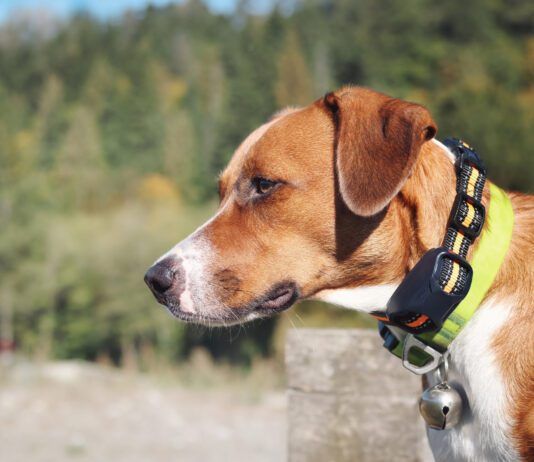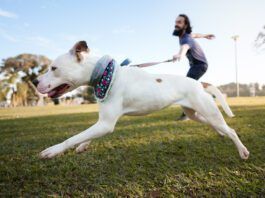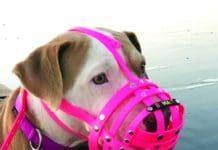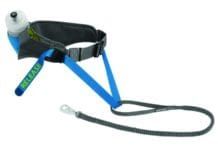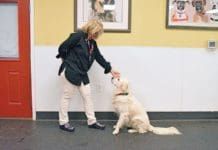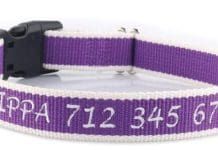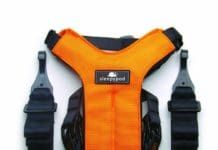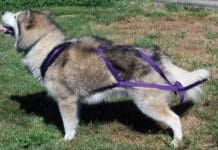Don’t Wait! Prevent Collar Accidents
I’m not one of those dog owners who has her dogs wrapped in cotton wool, constantly looking to protect them from any and all...
Dog Muzzles Are Useful Tools When You Use Them Right
India) has been conditioned by her owner to wear a muzzle happily; for her
The Trail Runner System: Whole Dog Journal’s Review
The Trail Runner System allows you to walk or run with a natural arm and shoulder motion something that is perhaps most appreciated by older athletes who exercise through the aches of age and former injuries while maintaining control of your dog. You can even drink from the water bottle, take photos with your cell phone, or pick up dog poop without losing control of your dog or getting tangled in the leash.
Dog Harness vs Collar: Which is Better?
Dog harnesses vs collars - which is safer? There are many types of collars and harnesses on the market, and some serve specific purposes.
Grabbing Your Dog’s Collar: Why and How to Practice
Let's take a moment to talk about collar grabs. I see a worrisome number of dogs who duck away when their human reaches for their collar. This is not only annoying for the human, it is also dangerous. Imagine what happens in an emergency, when the owner needs to quickly corral the dog to keep her out of danger, and the dog ducks away from the reaching hand and runs off.
The Safest Types of Dog Collars (and the Most Dangerous)
What type of collar should your dog wear? It depends on your dog, your personal taste, and your training goals, philosophies, and needs. But from our force-free perspective, there are some types of collars we wholeheartedly endorse, some we support with caution, and some that we regard as unnecessary and risky.
Finding the Best Front Clip Dog Harness
Using a harness for dogs instead of a collar has huge benefits. There are many types of dog harnesses out there, and finding the best adult dog or puppy harness might seem like a daunting task. This Whole Dog Journal review of harnesses does all of the trial and error work of finding a quality harness for you! For dogs who pull on leash, WDJ strongly prefers harnesses over choke chains, prong collars, shock collars, and even flat collars and head halters.
Can a Collar Damage a Dog’s Thyroid?
Pulling on leash is problematic for many reasons. It's likely uncomfortable for the dog (even when the desired forward motion trumps the discomfort); it's uncomfortable for the human handling the dog; and it skews natural dog body language, potentially contributing to conflicts between dogs. We'd say the additional potential for contributing to the development of thyroid disease, particularly in breeds known to be genetically predisposed, makes using a well-fitted front-clip harness a wise choice.
Best Puppy Collars & Harnesses
Does this collar make me look fat?" This is not a question your dog is likely to ever ask
How to Put a Harness on a Dog(Jacket, Thundershirt, etc.)
Some behaviors don't lend themselves well to a total choice approach, but you may be able to use a Choice/Conditioning-hybrid procedure, still giving your...
Whole Dog Journal’s Car Safety Harness Recommendation
000 words on why reliable and independent crash testing of dog safety restraints is needed. A truly protective safety harness does not allow a dog to "launch" on impact. (For worse shocks
Choosing The Right Harness for Your Dog
Harnesses for our canine companions come in a wide variety of colors, shapes, and sizes. But did you know that many are made for a particular purpose? Have a dog you want to pull you on your skis? Got it. Have a puller – and you’d like a respite? Covered. Have a little dog? The possibilities are endless. Despite that fact, many of us walk into our local big box pet store and pull a harness off the rack without even considering the harness’ fit and function. With just a little more awareness, you can be sure that the harness you select for your dog is the right one.


